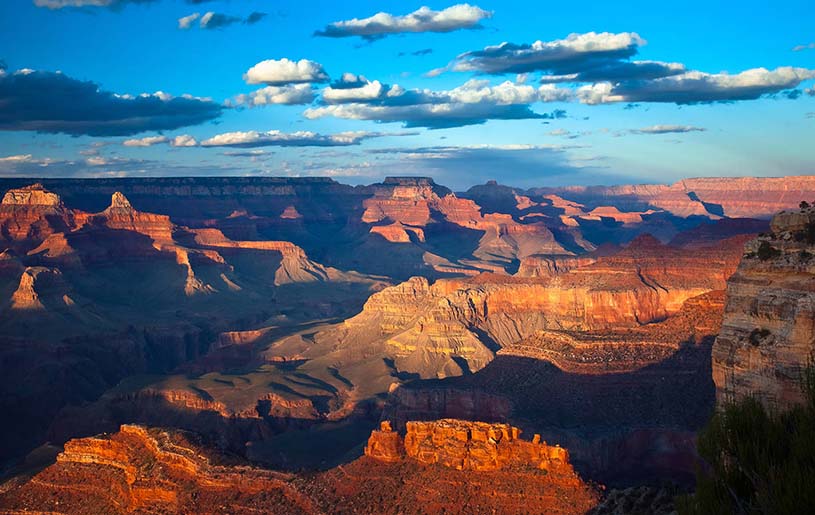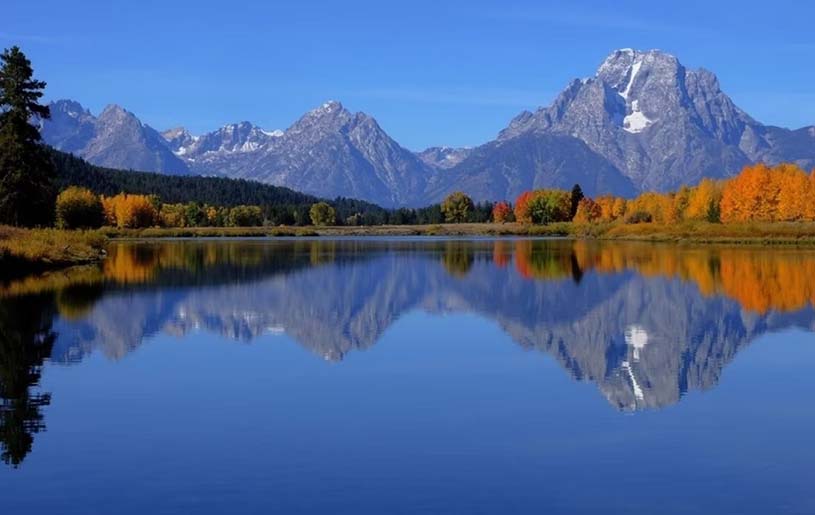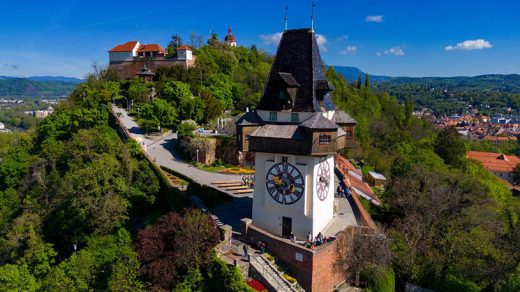I recently embarked on an unforgettable journey across the American West, starting from Los Angeles and heading all the way to the majestic Yellowstone National Park. This trip offered me a chance to explore some of the most iconic landscapes in the United States. I’ll share my detailed itinerary, personal experiences, and practical tips for each stop along the way. I hope this guide will help you plan your own epic road trip.
1. Los Angeles: The Urban Starting Point
My journey began in Los Angeles, a vibrant city known for its entertainment industry and cultural attractions. Before hitting the road, I took some time to enjoy the city’s highlights, such as Hollywood Boulevard, the Griffith Observatory, and the beautiful Santa Monica Pier. Los Angeles is also famous for its diverse dining scene and shopping opportunities, making it a great place to prepare for the adventure ahead. Whether you’re exploring the city or just passing through, Los Angeles offers a wealth of experiences to kick off your road trip.
2. Palm Springs: A Desert Oasis
Leaving Los Angeles, my first major stop was Palm Springs. Nestled in the California desert, this charming town is known for its picturesque desert landscapes and luxurious resorts. Palm Springs serves as an excellent halfway point to relax and enjoy some desert sunshine. I visited the iconic wind farms, took a tramway ride up the San Jacinto Mountains, and explored the town’s trendy shops and restaurants. The desert scenery provided a stunning contrast to the urban environment of Los Angeles.
3. Joshua Tree National Park: A Desert Wonderland
Continuing north, I arrived at Joshua Tree National Park, a true gem of the California desert renowned for its otherworldly landscape and unique geological features. As soon as I entered the park, I was struck by the park’s namesake Joshua trees. These peculiar trees, with their spiky branches and striking silhouette, seem almost alien against the backdrop of rugged desert terrain. Their unusual shape, combined with the park’s stark beauty, creates a landscape that feels both surreal and awe-inspiring.
One of the highlights of my visit was hiking the park’s various trails, each offering a different perspective on the park’s diverse environment. I started with the Hidden Valley Trail, which is a relatively easy 1-mile loop that takes you through a captivating maze of rock formations. The trail is surrounded by towering boulders and impressive rock formations, making it a favorite among rock climbers and photographers. The play of light and shadow on the rocks as the sun moved across the sky provided endless opportunities for stunning photos.
Next, I tackled the Barker Dam Trail, a 1.8-mile loop that features both natural and historical elements. This trail is known for its combination of desert scenery and historical significance, as it passes by an old cattle dam built by early settlers. The trail offers a more diverse landscape, including views of the dam itself and a seasonal pond that attracts local wildlife. It’s a great spot for birdwatching and appreciating the contrast between the arid surroundings and the lush vegetation around the dam.
One of the most memorable experiences at Joshua Tree National Park was the stargazing. The park’s remote location and minimal light pollution make it one of the best places in the United States for observing the night sky. I spent several evenings lying on a blanket under the vast, star-studded sky, marveling at the sheer number of stars visible. The Milky Way was clearly visible, and I could see countless constellations and shooting stars. The experience was truly magical and offered a serene and contemplative end to each day.
Joshua Tree National Park also features other notable landmarks, such as the Cholla Cactus Garden and the Arch Rock, each offering its own unique beauty. The Cholla Cactus Garden is especially striking at sunrise or sunset when the light casts a golden hue over the cacti, creating a surreal and almost otherworldly atmosphere. Arch Rock, with its natural rock arch formation, is another iconic spot where you can capture stunning photographs or simply enjoy the unique geological formations.
Joshua Tree National Park was a highlight of my journey, offering a combination of striking natural beauty, fascinating geological features, and unparalleled stargazing opportunities. Whether you’re an avid hiker, a photography enthusiast, or simply someone who enjoys the tranquility of the desert, Joshua Tree is a destination that promises to leave a lasting impression.
4. Route 66: The Historic Highway
After Joshua Tree, I drove along the iconic Route 66, often referred to as the “Mother Road.” This historic highway stretches from Chicago to Los Angeles, and driving a portion of it was a nostalgic experience. I explored vintage diners, quirky roadside attractions, and historic landmarks along the route. Route 66 offers a glimpse into America’s past and is a must-see for anyone interested in classic Americana.
5. Grand Canyon National Park: A Natural Wonder
The next major stop on my road trip was Grand Canyon National Park, and the experience was nothing short of extraordinary. As I arrived at the park, I was immediately struck by the sheer scale and grandeur of the canyon, which stretches over 277 miles in length and up to 18 miles in width. The immense scale of the Grand Canyon is truly overwhelming, and it’s one of those places where pictures and descriptions barely do justice to the real thing.

I spent most of my time exploring the South Rim, which is renowned for its stunning viewpoints and diverse hiking opportunities. The South Rim offers some of the most iconic and accessible viewpoints, providing spectacular panoramic views of the canyon’s vast expanse. I started my visit at the Grand Canyon Village, which serves as the main hub for visitors on the South Rim. Here, I found a variety of amenities, including visitor centers, gift shops, and eateries.
One of the highlights of my visit was walking along the Rim Trail, which offers a relatively easy and flat hike with some of the best views of the canyon. The trail stretches for several miles, providing numerous viewpoints where you can pause and take in the breathtaking scenery. The colors of the canyon walls, ranging from deep reds and oranges to softer purples and blues, create a stunning mosaic that changes with the shifting light of the day.
Another must-see spot was Mather Point, one of the most popular viewpoints on the South Rim. The expansive views from Mather Point are simply mesmerizing, offering a panoramic vista of the canyon’s rugged terrain and the Colorado River winding far below. I spent several hours here, taking in the vastness of the canyon and watching the changing colors as the sun began to set.
For a more adventurous experience, I decided to take a helicopter tour of the Grand Canyon. This was an absolute highlight of my trip. The aerial perspective provided a unique and unparalleled view of the canyon’s intricate rock formations and vast scale. As the helicopter soared over the canyon, I marveled at the intricate layers of sedimentary rock that have been shaped over millions of years. The flight also offered breathtaking views of the Colorado River, which snakes through the canyon and adds to the grandeur of the landscape.
Additionally, I explored some of the South Rim’s famous overlooks, such as Yaki Point and Desert View. Yaki Point offers a more remote and tranquil view of the canyon, away from the crowds, and provides an excellent spot for sunrise photography. Desert View, located at the eastern end of the South Rim, features a historic watchtower that offers an elevated view of the canyon and the surrounding landscape. The watchtower itself is a fascinating piece of architecture, designed to blend with the natural surroundings.
For those interested in hiking, the South Rim provides several trail options, including the Bright Angel Trail and the South Kaibab Trail. Although I didn’t hike all the way to the bottom of the canyon, I did enjoy short segments of these trails, which offer a chance to descend into the canyon and experience its depth and scale up close. Both trails are known for their challenging terrain and stunning views, and they provide a more immersive experience of the canyon’s geological wonders.
6. Page and Lake Powell: A Water Wonderland
From the Grand Canyon, I drove to Page, Arizona, home to the stunning Lake Powell. This man-made reservoir is surrounded by striking red rock formations, and it offers a range of water activities. I took a boat tour to see the mesmerizing Antelope Canyon, known for its narrow passageways and light beams. Lake Powell’s clear blue waters and dramatic scenery made it a perfect place to unwind and enjoy the beauty of the desert lake.
7. Monument Valley: Iconic Desert Landscape
Continuing my journey, I arrived at Monument Valley, a symbol of the American Southwest. Famous for its towering sandstone buttes and vast desert landscapes, Monument Valley is a quintessential part of the Western experience. I joined a guided Jeep tour led by a Navajo guide, who provided fascinating insights into the area’s cultural and geological significance. The landscape’s sheer beauty and historical context made it an unforgettable stop.
8. Arches National Park: Rock Formations Galore
My next destination was Arches National Park in southeastern Utah. The park is renowned for its natural rock arches and unique geological formations. Highlights included the Delicate Arch and the Windows Section, both of which offer stunning views and excellent photo opportunities. Hiking through the park, I marveled at the sheer diversity and beauty of the rock formations, each one more impressive than the last.
9. Grand Teton National Park: Majestic Mountains

After Arches, I traveled to Grand Teton National Park, known for its dramatic mountain scenery and picturesque lakes. The Teton Range, with its rugged peaks and alpine lakes, provided a stark contrast to the previous desert landscapes. I enjoyed kayaking on Jackson Lake and taking scenic drives through the park. The serene beauty of Grand Teton was a peaceful interlude before the final leg of my journey.
10. Yellowstone National Park: The Grand Finale
Finally, I reached Yellowstone National Park, the ultimate destination of my road trip. Yellowstone’s geothermal features, including geysers, hot springs, and mud pots, are truly remarkable. I explored the Upper Geyser Basin, home to the famous Old Faithful Geyser, and took in the stunning views of the Yellowstone River Canyon. The park’s diverse wildlife, including bison and elk, added to the adventure. Yellowstone was the perfect conclusion to an epic road trip through the American West.
This road trip from Los Angeles to Yellowstone was a remarkable journey, showcasing the diverse landscapes and iconic sights of the American West. Each stop offered its own unique charm and beauty, making the trip a truly memorable experience. If you’re planning a similar road trip, I hope my itinerary and tips provide valuable insights and inspiration for your adventure.






